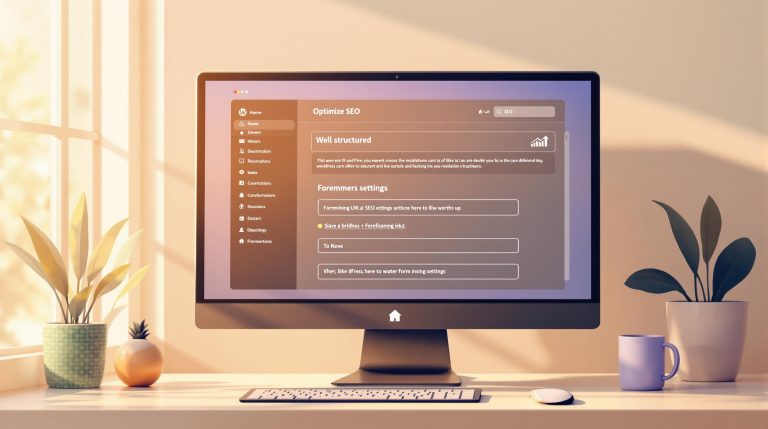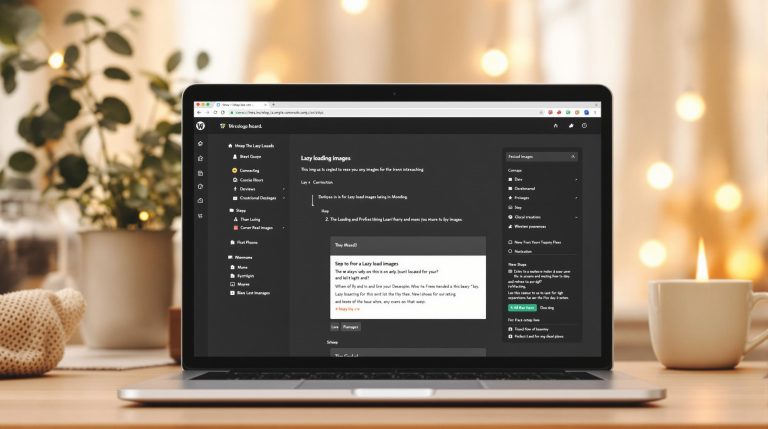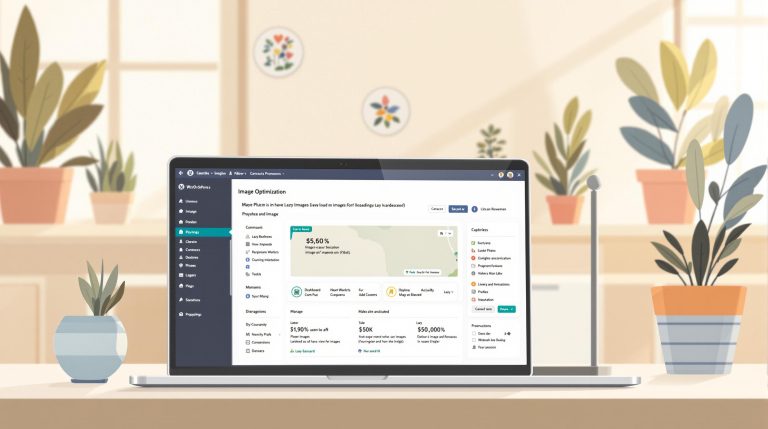Effective SEO Strategies to Boost Website Traffic
Website traffic refers to the volume of visitors or users who access a particular website over a specified period. It is a crucial metric for measuring the popularity, visibility, and performance of a website. Website traffic can be categorized into various types:
- Organic Traffic: Visitors who arrive at a website through search engine results without paid promotion.
- Direct Traffic: Users who directly type the website’s URL into their browser or have it bookmarked.
- Referral Traffic: Visitors who land on a website through external links from other websites.
- Social Traffic: Traffic originating from social media platforms when users click on links shared in posts, tweets, or profiles.
- Paid Traffic: Visitors acquired through paid advertising campaigns, such as pay-per-click (PPC) ads.
- Mobile Traffic: Users accessing the website from mobile devices like smartphones and tablets.
- Bounce Rate: The percentage of single-page sessions where visitors leave without interacting further.
- Session Duration: The average time visitors spend on the site during a session.
- Pageviews: The total number of pages viewed by all users, indicating site engagement.

Website traffic analysis provides valuable insights into user behavior, content performance, and the effectiveness of marketing efforts. It helps businesses optimize their online presence, enhance user experience, and achieve specific goals, such as lead generation, e-commerce sales, or brand awareness. Monitoring and interpreting website traffic data are essential for informed decision-making and continual website improvement.
What are the most efficacious Search Engine Optimization (SEO) methodologies for boosting website traffic?
Effective SEO (Search Engine Optimization) strategies can significantly boost website traffic. Here are some key strategies to consider:
- Keyword Research: Identify relevant keywords and phrases your target audience is likely to search for. Use keyword research tools to find high-volume and low-competition keywords.
- On-Page SEO: Optimize your website’s content, including titles, headings, meta descriptions, and image alt text, for your chosen keywords. Ensure your content is high-quality, informative, and engaging.
- Mobile-Friendly Design: Ensure your website is responsive and mobile-friendly. Google prioritizes mobile-friendly websites in its search results.
- Site Speed Optimization: Fast-loading websites rank higher. Compress images, use browser caching, and consider using Content Delivery Networks (CDNs) to improve your site’s speed.
- Quality Backlinks: Build high-quality backlinks from reputable websites in your industry. Guest posting, content outreach, and influencer collaborations can help you acquire valuable backlinks.
- Content Marketing: Regularly create fresh, valuable, and shareable content. Blog posts, infographics, videos, and guides can attract and engage your audience.
- Technical SEO: Ensure your website has a clean and crawlable structure. Use XML sitemaps, optimize robots.txt, and fix any crawl errors.
- Local SEO: If you have a local business, optimize your website for local searches. Create a Google My Business profile, get reviews, and use location-specific keywords.
- User Experience (UX): Provide a great user experience. A well-designed, easy-to-navigate website keeps users engaged and reduces bounce rates.
- Schema Markup: Implement schema markup to provide search engines with more context about your content, which can lead to rich snippets in search results.
- Social Media Integration: Promote your content on social media platforms to increase visibility and encourage sharing.
- Regular Monitoring and Updates: Continuously monitor your SEO efforts using tools like Google Analytics and Google Search Console. Adjust your strategies based on performance data.
- Voice Search Optimization: Optimize your content for voice search by focusing on natural language and answering common questions concisely.
- SSL Security: Use SSL certificates to secure your website. Google gives preference to secure websites in search rankings.
- Local Listings and Directories: Ensure your business is listed accurately in local directories and industry-specific listings.
How Does Keyword Research Help Improve Website Traffic?
Keyword research plays a pivotal role in enhancing a website’s traffic through several essential mechanisms and it is the most important part of the process in an SEO company:
- Relevance: Identifying relevant keywords ensures that your website’s content aligns with what your target audience is searching for. When your content matches their queries, your website is more likely to appear in search results.
- Ranking: By optimizing your web pages for specific keywords, you increase the likelihood of ranking higher in search engine results pages (SERPs). Websites that appear on the first page of search results tend to receive more organic traffic.
- Content Strategy: Keyword research informs your content creation strategy. It helps you understand what topics and themes resonate with your audience, allowing you to create valuable and targeted content.
- Competitive Advantage: Analyzing keyword competition helps you identify opportunities where you can compete effectively. Focusing on less competitive keywords can lead to quicker rankings and traffic gains.
- Long-Tail Keywords: Long-tail keywords are specific, longer phrases that often have lower competition. Targeting these keywords can attract highly targeted traffic, increasing the chances of conversion.
- User Intent: Keyword research helps you understand user intent. By aligning your content with the intent behind specific keywords (e.g., informational, transactional), you can provide a better user experience and meet users’ needs.
- Content Optimization: Once you’ve identified keywords, you can strategically incorporate them into your content, including titles, headings, meta descriptions, and body text. This optimization signals to search engines what your content is about.
- Monitoring and Adaptation: Regularly reviewing keyword performance allows you to adapt your SEO strategy. You can identify emerging trends or shifts in user behavior and adjust your content accordingly.
- Localization: For businesses with local audiences, keyword research helps with local SEO. You can target location-specific keywords to attract visitors from your geographic area.
- Traffic Quality: Keyword research contributes to attracting high-quality traffic. When you target the right keywords, you’re more likely to attract visitors genuinely interested in your content, products, or services
The role of On-Page SEO on website traffic
On-page SEO plays a significant role in driving website traffic by optimizing individual web pages to improve their visibility and relevance in search engine results. Here’s how on-page SEO contributes to website traffic:
- Keyword Optimization: On-page SEO involves optimizing content with relevant keywords and phrases that your target audience is likely to use in search queries. Proper keyword usage in titles, headings, body content, and meta tags can improve your page’s chances of ranking for those keywords.
- Title Tags: Crafting descriptive and keyword-rich title tags for each page helps search engines understand the page’s content. An engaging and optimized title tag can entice users to click on your link in search results, increasing the click-through rate (CTR).
- Meta Descriptions: Writing compelling meta descriptions that include keywords and a clear call to action can influence users to click on your link. While meta descriptions don’t directly affect rankings, they do impact CTR, which can indirectly improve your page’s visibility in search results.
- Header Tags (H1, H2, etc.): Properly structuring your content with header tags not only improves readability but also helps search engines understand the hierarchy of information on your page. Using keywords in headers reinforces the page’s topic.
- Content Quality: Creating high-quality, informative, and engaging content is crucial for both user satisfaction and SEO. Valuable content attracts visitors, encourages them to stay longer on your site, and shares it with others.
- Keyword Density: Maintain a natural keyword density in your content. Overloading with keywords can lead to keyword stuffing, which is discouraged by search engines.
- Image Optimization: Optimizing images with descriptive file names and alt text can improve your page’s accessibility and image search visibility. Image search can drive additional traffic.
- Internal Linking: Strategically linking to other relevant pages within your website helps distribute link authority and keeps users engaged, leading to longer sessions on your site.
- URL Structure: Use descriptive and SEO-friendly URLs that reflect the content of your pages. Avoid long, convoluted URLs with unnecessary parameters.
- Mobile Optimization: Ensure your page is responsive and mobile-friendly to accommodate users on various devices. Mobile-friendly pages may rank higher in mobile search results.
- Page Speed: Fast-loading pages provide a better user experience, which can lead to lower bounce rates and higher rankings. Google considers page speed as a ranking factor.
- Structured Data: Implement structured data (schema markup) to enhance the appearance of your page in search results with rich snippets, which can attract more clicks.
- Content Updates: Regularly update and refresh your content to keep it relevant and up-to-date. Search engines favor fresh and valuable content.
- User Experience (UX): A well-designed and user-friendly page can lead to longer time on site, lower bounce rates, and higher rankings.
- Local SEO: If applicable, optimize pages for local search by including location-specific keywords and NAP (Name, Address, Phone number) information.
- Content-Length: While there’s no fixed rule, longer, in-depth content often performs well in search results as it can cover topics comprehensively and satisfy user intent.
How High-Speed and Mobile-Friendly Websites Supercharge Web Traffic?
In the digital age, the speed and accessibility of websites are paramount. Internet users demand fast-loading pages that are accessible on their mobile devices. High-speed and mobile-friendly websites have become the engines of web traffic growth, with significant implications for businesses, content creators, and online platforms.
- The Need for Speed: Slow-loading websites frustrate users and lead to higher bounce rates. Search engines like Google prioritize speed as a ranking factor, meaning that faster websites tend to rank higher in search results. This boosts organic traffic as users are more likely to click on faster-loading pages.
- Mobile-First World: With the proliferation of smartphones and mobile devices, the majority of internet traffic now comes from mobile. Mobile-friendly websites are designed to provide an optimal user experience on smaller screens. Ensuring mobile compatibility is essential for reaching and retaining mobile users, who make up a substantial portion of web traffic.
- Reducing Bounce Rates: High-speed and mobile-friendly websites keep users engaged. Lower bounce rates—when visitors leave a site quickly—signal to search engines that the content is relevant and valuable. This can further improve search rankings and attract more organic traffic.
- Improved User Experience: Speed and mobile-friendliness contribute to a positive user experience. Users are more likely to explore a site, view multiple pages, and spend more time on it when they can easily navigate and access content. This increases the chances of converting visitors into customers or loyal readers.
- Enhancing Mobile SEO: Mobile-friendliness is crucial for mobile search engine optimization (SEO). Websites that meet mobile-friendly criteria are favored by search engines and receive a boost in mobile search rankings. This leads to more mobile traffic.
- Global Reach: Mobile devices have enabled internet access for users around the world. A mobile-friendly website can attract a global audience, expanding your reach and potential for web traffic.
- Adaptation to Trends: Staying competitive in the digital landscape requires adaptation to evolving trends. As technology advances and user behaviors change, maintaining a high-speed and mobile-friendly website ensures your relevance and competitiveness.
- E-commerce and Conversions: For e-commerce businesses, the impact of speed and mobile-friendliness is even more pronounced. A slow or non-mobile-optimized site can lead to cart abandonment and loss of potential customers. Conversely, a fast and mobile-responsive site can lead to increased sales and conversions.
Do high-quality Backlinks and content improve the website traffic quickly?
High-quality backlinks and excellent content are crucial elements of a successful SEO strategy, and they can indeed improve website traffic over time. However, it’s important to note that the process may not be immediate, and the speed of traffic improvement can vary based on several factors. Here’s a breakdown of how these elements impact web traffic:
- High-Quality Backlinks:
- Authority and Trust: Backlinks from authoritative and trusted websites can boost your website’s credibility in the eyes of search engines. As search engines recognize your website as a reliable source, it may result in higher search rankings over time.
- Referral Traffic: Backlinks from relevant and authoritative sources can also bring direct traffic to your website. Users who click on these links are often genuinely interested in your content.
- Natural Link Building: High-quality backlinks typically accumulate gradually as other websites organically link to your content. This process can take time, but it’s a sustainable and valuable approach.
- Excellent Content:
- Engagement: High-quality content that is informative, engaging, and valuable to your target audience can encourage visitors to spend more time on your website, explore multiple pages, and return for future visits.
- Social Sharing: Exceptional content often gets shared on social media platforms, leading to increased visibility and potential referral traffic.
- Search Engine Rankings: Well-optimized, valuable content can improve your website’s search engine rankings over time, attracting more organic traffic.
While high-quality backlinks and content are essential for long-term traffic growth, the speed of improvement can depend on various factors:
- Competition: The level of competition in your niche or industry plays a role. In highly competitive fields, it may take longer to outrank established websites.
- Content Freshness: Regularly updating and adding new high-quality content can expedite traffic growth. Fresh content can attract search engine crawlers and keep users engaged.
- Link-Building Efforts: Proactive link-building efforts, such as outreach and guest posting, can help accelerate the acquisition of high-quality backlinks.
- Website Authority: The existing authority of your website also matters. New websites may take longer to see significant traffic growth compared to established, authoritative sites.
- Algorithm Updates: Search engine algorithms can change, affecting rankings. Consistency in your SEO efforts is essential to maintain and improve traffic, especially in the face of algorithm updates.
- User Experience: A positive user experience, including mobile-friendliness and fast page load times, can contribute to quicker traffic growth.
The effect of professional Local SEO and technical SEO on website traffic:
Professional Local SEO and Technical SEO have significant impacts on website traffic. Each of these strategies addresses different aspects of search engine optimization, ultimately enhancing a website’s visibility and attracting more relevant visitors. Here’s how they affect web traffic:
Professional Local SEO:
- Increased Local Visibility: Local SEO strategies, such as optimizing for location-based keywords and creating Google My Business listings, improve a website’s visibility in local search results. This is crucial for businesses targeting a local audience.
- Local Pack Inclusion: Effective Local SEO can help your website appear in the local pack (the map and business listings are displayed prominently in search results). Being featured here can lead to a substantial increase in clicks and visits from users looking for local services or products.
- Online Reviews: Managing and encouraging online reviews through Local SEO efforts can boost your online reputation. Positive reviews can attract more visitors who trust your business.
- Voice Search Optimization: With the rise of voice search, Local SEO becomes even more critical. Optimizing for local voice search queries can lead to increased traffic from voice search users.
- Mobile Optimization: Local SEO often involves mobile optimization, ensuring that your website performs well on mobile devices. As mobile usage continues to grow, this can lead to increased mobile traffic.
- Local Link Building: Building local citations and backlinks from authoritative local sources can boost your website’s authority and visibility, attracting more local visitors.
Technical SEO:
- Improved Search Rankings: Technical SEO focuses on optimizing the technical aspects of your website, such as site speed, crawlability, and indexability. When your website performs well technically, search engines are more likely to rank it higher in search results, leading to increased organic traffic.
- Enhanced User Experience: Technical SEO includes optimizing website structure and navigation, which improves the user experience. Visitors are more likely to stay on and explore a website that is easy to navigate, leading to longer sessions and more page views.
- Mobile Optimization: As search engines prioritize mobile-friendly websites, technical optimization for mobile devices can significantly impact your mobile traffic.
- Faster Page Load Times: Technical SEO involves optimizing page load times, reducing bounce rates, and increasing the likelihood that users will explore more pages on your site.
- Schema Markup: Implementing structured data (schema markup) can enhance your website’s appearance in search results, making it more appealing to users and potentially increasing click-through rates.
- Security: Implementing HTTPS through SSL certificates can improve user trust and search engine rankings, potentially leading to more traffic.
- Sitemaps and Crawling: Ensuring search engines can easily crawl and index your site through proper sitemaps and robot.txt files is fundamental for search visibility.
The Role of User Experience (UX) in Boosting Website Traffic
User Experience (UX) plays a crucial role in boosting website traffic in several ways. A positive user experience not only retains existing visitors but also attracts new ones. Here’s how UX contributes to increased web traffic:
- Reduced Bounce Rates: A well-designed and user-friendly website keeps visitors engaged, reducing bounce rates. When users find your site easy to navigate and the content relevant, they are more likely to explore multiple pages, spend more time on your site, and return for future visits.
- Improved Search Engine Rankings: Search engines like Google consider user engagement metrics, such as time on site and bounce rate, when determining rankings. Lower bounce rates and longer sessions signal to search engines that your content is valuable, potentially leading to higher search rankings and more organic traffic.
- Mobile Responsiveness: Mobile devices are a primary source of web traffic. A mobile-responsive design ensures that your site is accessible and user-friendly on various screen sizes. Mobile optimization can lead to increased mobile traffic.
- Faster Page Load Times: Slow-loading pages can deter users and increase bounce rates. Optimizing page load times, such as through image optimization and efficient code, can improve user experience and lead to higher traffic, as well as better search engine rankings.
- Enhanced Content Presentation: A clean and organized layout, along with well-structured content, makes it easier for users to find the information they need. This keeps them on your site longer, resulting in improved user engagement and more page views.
- Clear Call-to-Actions (CTAs): Effective CTAs guide users toward desired actions, such as signing up for a newsletter, making a purchase, or sharing content on social media. A seamless user experience with clear CTAs can increase conversions and encourage users to interact more with your site.
- Content Accessibility: Ensuring that your content is accessible to all users, including those with disabilities, can expand your audience. Accessibility improvements, such as proper alt text for images and keyboard navigation, can also improve your SEO, indirectly boosting traffic.
- Consistent Branding: A cohesive and recognizable brand presence across your website builds trust and credibility. Consistent branding encourages repeat visits and word-of-mouth referrals, leading to sustained traffic growth.
- Feedback and User Testing: Collecting user feedback and conducting usability testing can help you identify and address issues that may be affecting the user experience. Continuous improvement based on user input can lead to higher user satisfaction and more return visits.
- Local SEO: For businesses with physical locations, a user-friendly experience that includes accurate NAP (Name, Address, Phone number) information can boost local SEO efforts. This can result in increased traffic from local searches.
- Social Sharing: An enjoyable user experience can prompt users to share your content on social media or recommend your site to others. This can lead to viral sharing and increased traffic.
At the end of the speech, effective SEO vs.PPC strategies are the cornerstone of website traffic growth. The comprehensive approach outlined here covers various aspects, ensuring that your website is well-positioned to attract a broader and more targeted audience. Keyword research forms the foundation, guiding your content optimization efforts. On-page SEO and mobile-friendly design enhance your site’s user experience and search engine compatibility. Speed optimization and quality backlinks boost your site’s authority and ranking potential.
Content marketing, including a diverse range of content types, keeps your audience engaged and encourages sharing. Technical SEO, local SEO, and schema markup further refine your website’s structure and visibility, particularly for local and context-specific searches. Integrating social media promotion widens your reach and encourages user interaction.
Continuous monitoring and adaptation based on performance data are essential for ongoing success, especially as voice search and secure connections gain prominence. Finally, ensuring your presence in local listings and directories further solidifies your local SEO efforts.
In implementing these strategies, your website can experience substantial growth in traffic, increased visibility in search results, and improved user engagement. These cumulative efforts can lead to the sustained success of your online presence and business objectives.





